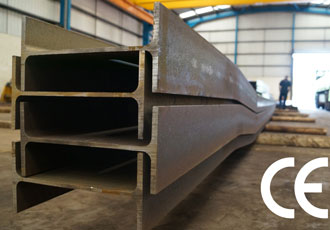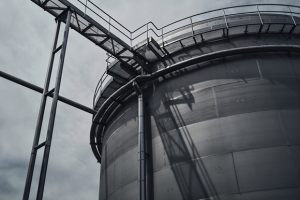The effects of CE marking on modern construction

Since its introduction in 2014, CE Marking for steel fabricated products has been the defining standard in assessing the quality, suitability and safety of steelwork. While the benefits of optimum steel products for structural applications may seem obvious, what has the overall effect on the construction industry been during this time period?
Greg North, Director at Barnshaws Section Benders, explores the benefits the standard has provided to construction.
The European Standard BS EN 1090 states that all steelwork supplied in the UK and Republic of Ireland must display the CE mark as a legal requirement, which denotes the suitability and quality of fabrications for use in specific structures. The CE mark is split into four distinct application categories known as Execution Classes.
Class 1 structural steel is suitable for farm buildings in uninhabited areas; Class 2 is majority of buildings constructed in the UK up to 15 storeys; Class 3 is specialised for bridges and stadia and Class 4 covers complex bridges and high risk sites such as nuclear power plants. Each class pertains to the potential risk of the structure if failure were to occur. The classes are decided by a number of factors. Production Category assesses the complexity of the steel fabrication, Consequence Class incorporates potential risk while Service Category evaluates the structural stresses exerted on the steelwork in application.
The effect of this is that steelwork must now be proven to be suitable for a particular application. While it may be obvious that using inferior quality steel fabrications in a bridge building project is unwise, it is also very important to select optimum steelwork that will provide the required performance in application. By selecting appropriately CE marked steelwork, construction companies can have increased confidence that steelwork will offer extended service life and performance. Furthermore, users are able to differentiate the levels of expertise from each supplier, allowing them to select an appropriate fabricator for each project with increased assurance.
All curved steel used in construction is required to be CE marked because of mechanical property changes during forming. Barnshaw Section Benders can CE mark curved steel to Execution Class 4 so quality is ensured for fabricators.
Choosing a highly optimised section can also serve to reduce weight and save space over an entire structure - which can be highly profitable for contractors. By eliminating the risks associated with over or under specified steelwork, construction companies can place increased confidence in the suitability and efficiency of a structure. By defining the Execution Class before fabrication begins, suppliers can also enact specialised production procedures to suit the demands of the application, offering a linear and cost effective workflow.
Achieving the production of fabricated steelwork to CE standards requires businesses to enact a total Factory Production Control (FPC) methodology. This involves keeping track of equipment used in fabrication, quality of welding and the grade of the steel utilised. In addition, total traceability is required from initial source to the final delivery on site. Processes require third party approval and certification, which at Barnshaws, is conducted by SCCS (Steel Construction Certification Scheme). Certification is conducted annually, which if achieved, ensures every steel product requiring CE marking is supplied with an independently ratified Declaration of Performance and an accompanying FPC Certificate.
Such practice has served to standardise levels of production in steel fabrication. While for many premium suppliers, very little amendment will have been carried out to existing processes, inferior suppliers will have been forced to conform or cease supplying steel. As a result, the general standard of fabrication in the steel construction industry has improved.
Furthermore, total traceability has allowed users to examine every step of the production life cycle for steelwork. Therefore, contractors can be sure of a dependable product, as it has been proven to be manufactured exactly to the specifications outlined by the applicable execution class and project brief. With approval from a third party regulatory organisation and relevant certification to reinforce this, the performance and reliability of the steel fabrication is assured.
The effect of CE marking on the construction industry is an increased confidence in the quality of structural steelwork. With third party certification, project contractors can be sure the fabrications utilised in construction work are optimised to the exact application. Therefore, steel fabricators have a clear mandate at the start of every project, while contractors can maximise the potential of structures within the structural tolerances of the steelwork specified. In addition, the introduction of mandatory Factory Production Control has raised standards in the steel fabrication sector, promoting businesses who aim to provide exemplary products.
However, the most important effect is the reduction of potential risk regarding steel structures. Improved confidence in the quality of steelwork translates to safer and more reliable structures, ensuring that every type of structure has complete integrity and suitability for its application.
Similar articles
More from Barnshaws Steel Bending Group
- Strawberries and beams at Wimbledon first court 28th June 2018
- Putting The Curve into Slough town centre 31st August 2017
- Barnshaws serves an ace for Wimbledon Centre Court 18th July 2017
- The effects of CE marking on modern construction 6th July 2017












Write a comment
No comments